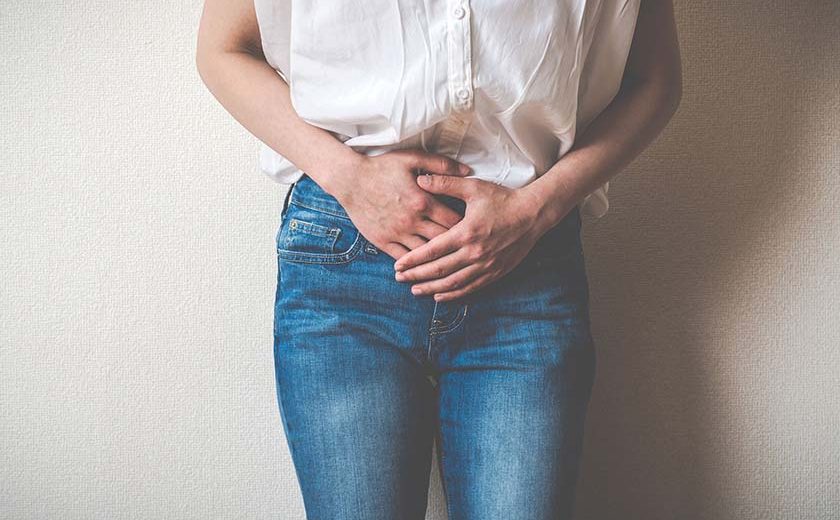About one in every fifteen women worldwide are said to experience Polycystic Ovarian Syndrome (also known as PCOS) and this syndrome can affect girls just entering puberty.
PCOS affects a myriad of body systems, causing disorders in menstruation, fertility, abnormal hair growth (hirsutism), weight problems (mainly obesity), acne and hormonal imbalance. Eventually, the primary effects may lead to further health complications. For example, obesity and hormonal imbalance leads to the occurrence of Type-2 diabetes as the body becomes slowly resistant to insulin. Some studies show that approximately 50% to 70% of women affected by PCOS are resistant to insulin. We’ll look at the symptoms, causes, diagnosis and treatments or management therapies available for PCOS in the next few sections.
SYMPTOMS OF PCOS
Irregular, absent or prolonged menstrual cycle, excessive hair growth, thinning scalp hair or hair loss (alopecia), acne and weight gain are some of the predominant signs that one is suffering from PCOS. Women suffering from PCOS in their child-bearing age may also find it difficult to get pregnant due to anovulation, when the ovaries fail to release an egg during the menstrual cycle. Hormonal imbalance caused by PCOS would eventually lead to acne and hirsutism (male pattern hair growth) whereas insulin resistance results in weight gain, high cholesterol levels and in some cases, type-2 diabetes.
CAUSES OF PCOS
As of today, there is no strong evidence that links the occurrence of PCOS to any lifestyle factor or a specific genetic impairment, but PCOS is most commonly thought to be a heterogeneous genetic disorder with a weak link to other still unclear factors. PCOS is believed to be hereditary, where women in the same family may be afflicted by PCOS together. It could also be due to exposure to high amounts of androgens during the foetal development of the baby girl in her mother’s womb, possibly resulting in some faulty gene expression which may contribute to the onset of PCOS when she grows older.
DIAGNOSIS OF PCOS
The ovaries of a person suffering from PCOS would contain many small cysts or fluid filled sacs besides producing higher levels of androgen (the male hormone) in the blood than normal. Doctors would typically diagnose PCOS by looking out for three main signs; abnormal menstruation (or the lack of it), blood androgen levels and the presence of the fluid-filled cysts through an ultra-sound scan of the ovaries. A doctor would typically start with asking for the history of menstruation, check for hirsutism, breast development (for adolescents) and the presence of acne before proceeding to examine further.
Further tests would include gynaecological ultrasonography, to look for small follicles or fluid filled sacs along the ovaries. The doctor may also perform laparoscopic examination to look at the conditions of the ovarian surface as a part of diagnosing PCOS. Besides that, a blood test to determine levels of glucose as well as the male hormone androstenedione and testosterones may be done to PCOS diagnosis.
Early detection and targeted treatment will help to decrease future complications of prolonged PCOS. Infertility, type 2 diabetes, high blood pressure, high cholesterol levels and heart disease may affect PCOS sufferers in the long run. By seeking for treatment early, the risks of developing such diseases will be significantly reduced.
MANAGEMENT OF PCOS
PCOS treatments will be given based on the symptoms and the goals. Depending on the desired outcome, the targeted treatment may be given as preferred. Some women want their fertility improved to get pregnant while others may have priority on improving their diabetic condition or for some others, the acne issue.
The basic advice that one may get would be to regularly exercise, have a healthy diet regiment, weight control and to stop smoking, in case of smokers. While there is no absolute cure for this syndrome, doctors would prescribe medication to help control the further risks associated with PCOS from snowballing into larger problems in later stages as it could lead to uterine cancer, diabetes, heart diseases and high cholesterol. Based on the targeted area of treatment, the doctor help to overcome the priority issues or symptoms and prescribe you drugs as below;

Birth Control Pills
The purpose of prescribing birth control medication is to stabilise the hormonal levels that can help to regulate menstrual cycle. It also lowers blood androgen levels, inevitably overcoming acne, which is caused by the male hormones and these pills may help with future conception of a child.
Anti-diabetic Medication
Anti-diabetics ensure the regulation of the hormone insulin to help uptake of glucose into the cells instead of circulating in the blood. When insulin is rightfully doing its job to convert glucose into cell energy, less glucose in the bloodstream would decrease the chances of obesity or weight issues. It can also help in lowering the levels of the male hormone in the blood and abnormal male hair growth pattern will decrease.
Fertility Stimulating Agents
70% of women having PCOS are believed to suffer from infertility. Most women suffering from PCOS are able to get pregnant when treatment is given. Ovulation stimulating medications may be prescribed. These medications stimulate monthly ovulation and may be given alone or in combination. Should the medication fail to improve fertility, the next level of treatment would be to inject gonadotropin, which stimulates multiple follicles to form in the ovaries. Just that with the gonadotropin treatment, one is at a risk of having multiple pregnancies. An equally effective alternative for this treatment without the risk of multiple pregnancies would be to undergo a procedure called the laparoscopic ovarian drilling as discussed next.

Surgeries or Procedures
Oophorectomy, Laparoscopic Ovarian Drilling, Cyst Aspiration and Hysterectomy may be done depending on your preferred outcome. Oophorectomy is a procedure involving the removal of one or both ovaries and in this case, it is usually meant for women who does not see the need to correct their fertility further. Hysterectomy is also done for similar cases where the uterus and cervix is surgically removed.
Laparoscopic Ovarian Drilling is done under general anaesthesia where a small incision is made at the lower abdominal area and pass a laparoscope (a long thin microscope) in. Heat or laser will be used to destroy the cells producing androgens in the ovaries resulting in a lower level of male hormones in the blood, allowing the female hormonal level to return as normal, and eventually restoring menstrual cycle.
The draining of fluid from the fluid –filled sacs present in the ovaries to avoid further complications or ruptures due to the cyst is called Cyst Aspiration. It is done under local anaesthesia where a small thin needle is guided through the skin of the abdomen or with a probe within the vagina.
Lifestyle Modifications
One may be given oral contraceptives, anti-androgens or selective oestrogen receptor modulators to achieve the pharmaco-therapeutic goal in the treatment of PCOS.
Weight loss medications or appetite suppressants may be prescribed for weight loss, statins for lowering blood cholesterol levels and medication for acne treatments, depending on the desired effect.
Healthy diet habits and regular physical activity or exercise can play a great role in relieving PCOS-related symptoms. It is critical to limit intake of saturated and trans fat and increase the intake of fibre in order to keep one’s weight and cardiovascular levels in check.
Getting sufficient and proper sleep also goes a long way to overcome and heal the symptoms of PCOS.
IN CONCLUSION…
Do remember to swiftly consult your doctor for a timely and accurate diagnosis Throughout the process of reversing or improving the related symptoms or conditions, it is imperative to be in regular consultation with your doctor so that the progress can be monitored and controlled. Please also help spread the word around and increase the awareness of this syndrome as a lot are still unaware of the effects of prolonged PCOS.
 Abraham Mathew Saji
Abraham Mathew Saji
References:
1) Lucidi, R.S.; Polycystic Ovarian Syndrome; Medscape; Feb. 28, 2018; emedicine.medscape.com; accessed Jan. 11, 2019.


